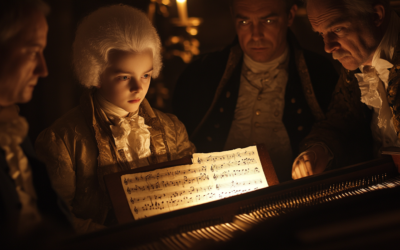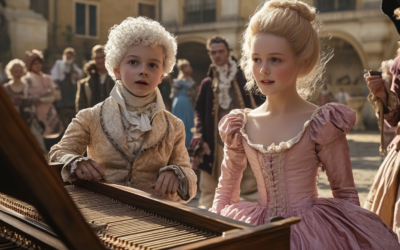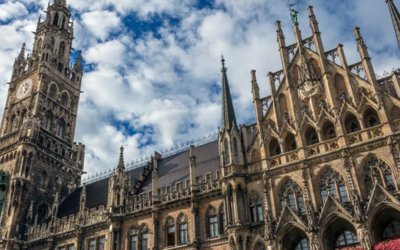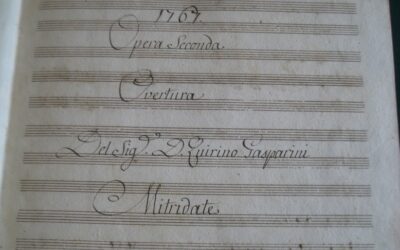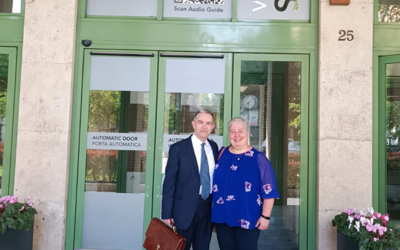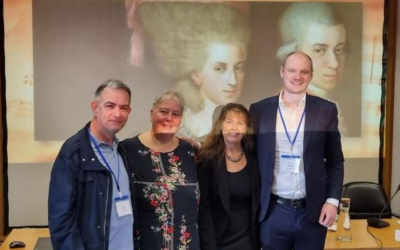The Questionable Origins of Mozart’s Violin Concertos
A Closer Look at the Ambiguities and Influences
Mozart’s first five violin concertos, composed in just eight months during 1775, present numerous contradictions, from unclear dates on manuscripts to varying levels of technical difficulty. These inconsistencies raise doubts about the true origins of these works.
Could Josef Mysliveček, a contemporary of Mozart, have provided more than just inspiration? Was Mozart’s “genius” merely an appropriation of ideas from those around him?
This article examines these questions, focusing on the stylistic similarities between the concertos and the works of Mysliveček.
Mozart: The Fall of the Gods
This book compiles the results of our studies on 18th-century music and Mozart, who has been revered for over two centuries as a deity. We dismantle the baseless cult of Mozart and strip away the clichés that falsely present him as a natural genius, revealing the contradictions in conventional biographies. In this work, divided into two parts, we identify and critically analyze several contradictory points in the vast Mozart bibliography. Each of the nearly 2,000 citations is meticulously sourced, allowing readers to verify the findings. This critical biography of Mozart emerges from these premises, addressing the numerous doubts raised by researchers.
"The undeniable influence of Mysliveček on Mozart’s violin concertos leaves one to wonder where genius ends and imitation begins."
Mozart: The Fall of the Gods
Contradictions in Manuscripts and Dates
The first five violin concertos attributed to Mozart—K.207, K.211, K.216, K.218, and K.219—are said to have been written between April and December 1775. Yet, the manuscripts tell a different story. The date for K.207, for example, appears multiple times on the autograph, suggesting “April 13, 1775,” “April 14, 1775,” or even “April 1780.” The numerous revisions of dates raise suspicion about when—and perhaps by whom—these works were truly composed.
Adding to the confusion is the absence of any commissioner for the concertos. These were not works requested for a particular occasion, which was unusual for Mozart, a composer who rarely wrote without a specific purpose. Moreover, the varying technical difficulty and style within the set of five concertos suggest inconsistencies not typical of a singular composer working on a cohesive project.
The Influence of Josef Mysliveček
It is impossible to ignore the role that Josef Mysliveček may have played in these works. Mozart met the Czech composer during his Italian travels, and their friendship endured until around 1778. Mysliveček’s influence on Mozart is particularly evident in K.207, which bears striking resemblances to his earlier compositions. The syncopated opening of K.207 mirrors Mysliveček’s style, and the structure of its movements closely follows the standard forms found in Mysliveček’s violin concertos.
Notably, Wolfgang Plath, a 20th-century Mozart scholar, suggested that K.207 might have been written as early as 1773, based on an analysis of the paper used for the autograph. However, even if we accept this earlier date, the question remains: how much of Mozart’s first violin concerto is truly his?
Borrowing or Imitation?
The similarities between Mozart’s violin concertos and those of Mysliveček extend beyond K.207. In fact, K.211, known as the “Concerto facile,” and K.218 also exhibit clear influences from Mysliveček’s compositions. Several phrases from these concertos reappear in Mozart’s later works, including his serenade Il Re Pastore.
Mozart himself acknowledged this practice of borrowing, as evidenced by a letter in which he humorously mentioned copying the title page of one of Mysliveček’s concertos. But did the borrowing stop at the title page? The resemblances between the two composers’ works suggest that Mozart, still learning the ropes of concerto composition, leaned heavily on his friend’s established mastery.
The Legacy of Collaboration
While some may argue that Mozart’s borrowings were merely a tribute to Mysliveček’s genius, others suggest a more collaborative relationship between the two. As musicologist Giuseppe Rausa theorizes, the two composers may have exchanged favors, with Mysliveček gifting Mozart some of his works in exchange for assistance with commissions in Salzburg.
If so, what does this say about the authorship of works like K.216, often hailed as a masterpiece? The structure and virtuosic demands of K.216 align more closely with Mysliveček’s style than with Mozart’s early works. Could this celebrated concerto have been more an act of appropriation than of creation?
You May Also Like
The Fabrication of Genius
Leopold Mozart’s tireless efforts to promote his son Wolfgang as a child prodigy were rooted in manipulation, exaggeration, and a relentless drive for social success. Far from being a miraculous genius, Wolfgang was pushed into the spotlight by his father, whose grandiose claims often obscured the reality of his son’s abilities.
The Myth of Mozart
A critical examination of Wolfgang Amadeus Mozart’s life reveals a man shaped more by his father’s ambitions than by innate genius. Stripped of the myths, Mozart’s early years reflect a childhood dominated by relentless touring, inconsistent education, and a legacy built on exaggerated achievements. Discover the real story behind the legend.
The Return of Gatti’s Aria
In the magnificent Max Joseph Hall of the Residenz München, tenor Daniel Behle performed the aria “Puoi vantar le tue ritorte” by Luigi Gatti, taken from his opera Nitteti. This concertante piece, for which we composed the cadenzas, was brought to life by the Salzburger Hofmusik orchestra under the direction of Wolfgang Brunner.
Quirino Gasparini’s Music Performed for the First Time
For the first time in modern history, Quirino Gasparini’s music has been performed. This concert, featuring arias from Mitridate and Beethoven’s Seventh Symphony, was conducted by Maestro Leonardo Muzii, with soprano Anastasiia Petrova.
Teaching Mozart at Bocconi University
We delivered a four-hour lecture on Mozart at Bocconi University, showcasing unpublished music by Gasparini, Gatti, and Tozzi while comparing textual and musical treatment with Mozart’s works. Unseen variants from Le Nozze di Figaro were also revealed.
New Revelations About Mozart at the Évora Forensic Conference
At the Évora Forensic Conference, new research confirmed that both Mozart’s personal catalogue and the signatures on his violin concertos are forgeries, challenging long-held beliefs.


